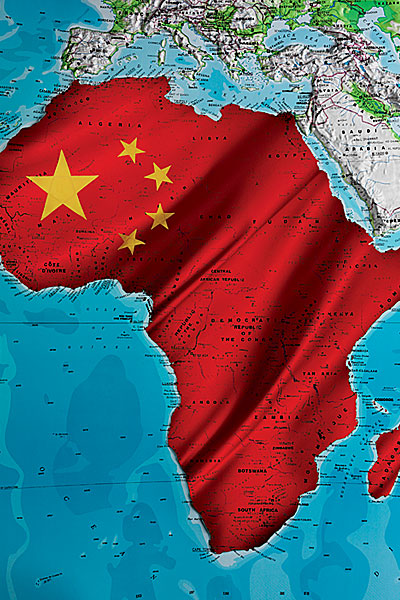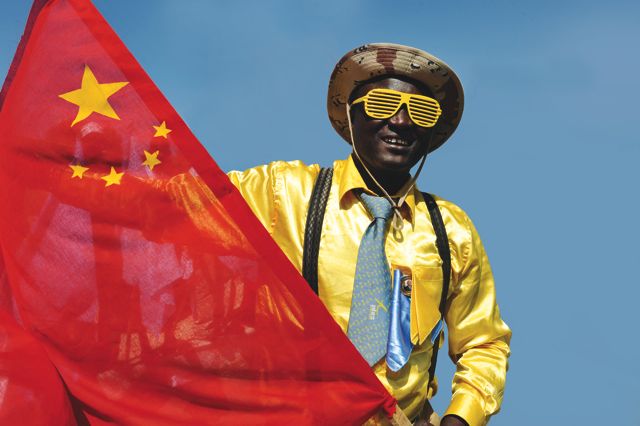China’s working age population is witnessing a dramatic contraction and the process is accelerating. China’s working age population, those aged 16 to 59, fell by 4.87 million in 2015[1]. The number of people in china who could work has been in decline for 3 years[2]. As projections stand, the working-age population could fall by 10% by 2040[3] and 23% by 2050.[4]
Labour costs are becoming increasingly problematic for investors in China.[5] Industrial action is also intensifying as the workers’ negotiating hand strengthens.[6] The rural-to-urban migration that has powered Chinese growth is also is precipitous decline with migrant numbers falling by 5.68 million last year.[7]
To compensate for the contraction in working population, and assuming that many of the four or five million either continue to work, provide vital unpaid domestic Labour or contribute to the economy through high levels of consumption all of which rely on the provision of social services, China will need to absorb between one and three million immigrants per annum to keep economic pace.
At the current time, demographic research indicates that patterns of declining fertility, in the mould of conventional development, are difficult to reverse. A such, reform to China’s One Child Policy is not expected to significantly alter fertility.[8] However, if it were to do so, the short to intermediate term necessity for greater immigration could intensify. Assuming the elderly population grows as projected – a virtual certainty, though notably dependent on social service provision – and the birth rate increases, the dependency ratio will deteriorate at an even greater pace as child dependents compound the problem of old-age dependency. This could also mean the retention of women from the work-force. In this scenario, significantly more than 3 million per annum may be required.
Realistically, the only sources of labour that could sustain this demand and remain price efficient would be the Indian Subcontinent and Sub-Saharan Africa. The Chinese diaspora, in all likelihood the preferred source of labour, is neither large enough nor demographically robust enough to submit migrants of the required quantity. Furthermore, the advantageous economic position of overseas Chinese individuals[9], both in south-east Asia and the west, surely reduces the effectiveness of any possible wage incentive for returning, which in any case would partially defeat the point of migration to supplement competitiveness. India’s population, for example, increases by around 17 million per year, although this is projected to decline in coming decades.[10] Assuming the Indian economy continues to expand apace, and sustaining its outperformance of China, the Indian workforce may be less accessible than that of other major low-skilled populations. Pakistan consistently records more robust population growth, projected to exceed 300 million by mid-century,[11] and weaker economic development than India, implying a more readily accessible workforce. However, China’s attitude to Pakistan has always been one of weary concern. In Beijing, fears of Islamist contagion abound.[12] Under these conditions, sustained immigration from Pakistan would seem to constitute a self-inflicted vulnerability to a country in its immediate geopolitical arena.

That leaves Africa. More than half of world population growth is expected to come from Sub-Saharan Africa in the coming decades.[13] Furthermore, China has very clearly established ties with African governments, based on China’s preferred principles of economic cooperation and political stability that are separate from international channels and projects.[14] China has capitalised on its political capital, economic clout, the perceived failure of western aid programs and the convergence of Chinese and African leaders’ interests to claim a degree of stewardship over African agriculture and establish a presence in natural resources.[15] Furthermore, it has consistently engaged in expansive programs of governance development, international representation and forged strategic ties, around the model of the China-Africa New strategic Partnership in 2006.[16] Although Africa can become more assertive, and African agency exists to a far greater extent than is often assumed[17], China is undoubtedly more confortable in this relationship than in other strategically critical ties. This leads us to believe that if sustained major immigration of wage-competitive workers is required, which could only be facilitated by a reformed visa regime focussed on specific countries and understandings with their governments, the only plausible candidates are China’s African partners.
China is not, in theory, a homogenous country: the five stars of the Chinese flag are said to represent the five key ethnicities of the country. The Han Chinese, though the largest ethnic group in the world, compose 90% of the Chinese population. However, the statistical fact belies the social reality. China’s minorities are concentrated in certain regions with which they historically associated. The experience of most Han Chinese is of near homogeneity and negligible exposure to non-Han. Research on multicultural countries in the west has proven the clear distinction in the public mind between (1) diversity as geographically defined as opposed to immediate and close mixing, and (2) historical minorities living in their historically occupied lands and newcomers. For these reasons, it is clear that large-scale sustained immigration of “newcomers” to China’s eastern industrial heartlands constitutes a new and alien experience for the native population.
Nationalism has been adept at providing the most expedient and non-committal political rhetoric under which reforms since Deng Xiapeng have been enacted. To some extent, it has displaced Communism, in its strictest sense, as the de facto ideology of the ruling party.[18] There can be little doubt, given the examples of twentieth century European nationalism, that such an ideology can swiftly pivot between external and internal enemies. Economically destructive societal ageing can easily combine with familiar populist narratives[19], including those concerning migration: typically, the restless, young, uneducated and male migrant population is made to contrast with a settled, ordered and prosperous native population, with migrant predations on native young girls a flashpoint of media interest.

The treatment of Africans in China today gives a clear insight into how mass Sub-Saharan African immigration may be treated. Nigerians, the largest African group in china, are subject to arbitrary and iniquitous treatment from the local police and state and severe restrictions on their movement in leaving, re-entering and moving inside China.[20] Although intermarriage is increasingly common[21], xenophobia abounds.[22] Traditional beauty standards also inform attitudes to peoples of colour. The preference for whiteness implies the ugliness of black skinned individuals. Africans are routinely characterized as criminals engaged in nearly perpetual low-level illegal criminality.[23]
Even if migrants are admitted from south-east Asia, the reaction may be similar. In Hong Kong, where migration to primarily from south-east Asia, racist incidents abound and accusations of systematic discrimination circulate regularly.[24]
While the overabundance of inexpensive low-skilled labour and their sourcing from weak and compliant governments means that such workers will remain dispensable, wage-depressed and deprived of worker-rights, China’s development will create a strong demand for high-skilled labour. Although this may be met by a rising Asia, the continued dominance of western tertiary education, R&D spending, research clustering and, more than anything the observable effect of market globalisation on higher salary, will almost certainly see wages at the higher end of the scale rise. This polarisation will almost certainly influence a binary division in the Chinese perspective and the adoption of something similar to the western terms “immigrant” and “expatriate”[25]: distinguishing between the neo-imperial, narrowly material ties to the Southern peoples with whom the Chinese mainstream feel neither community nor mutual respect, and the desirable, aspirational ties that they feel for the global north, whose company they prefer and whose culture they appropriate and participate in. Chinese racial notions already clearly distinguish between laowai, or “old foreigner”, meaning a white individual, and heiren or “black person”.[26] There is some evidence to suggest that Chinese commentators are increasingly conflating Africans in Chinese society with African -Americans and, in so doing, drawing on a simplistic caricature of western racial politics to inform their own.[27][28] From a nascent global cultural reach, a new racial paradigm begins to be broadcast, drawing on powerful present circumstances and ageless bias, that lightness is good and colour is bad.
[1] http://blogs.wsj.com/chinarealtime/2016/01/22/chinas-working-age-population-sees-biggest-ever-decline/
[2] https://next.ft.com/content/d6681cba-9e3c-11e5-b45d-4812f209f861
[3]https://openknowledge.worldbank.org/bitstream/handle/10986/23133/9781464804694.pdf
[4] http://thebricspost.com/chinas-working-age-population-to-fall-23-by-2050/#.V5HfiZOAOko
[5] http://www.wsj.com/articles/american-companies-say-doing-business-in-china-is-getting-tougher-1453260461?tesla=y
[6] http://www.clb.org.hk/en/content/strikes-and-protests-china%E2%80%99s-workers-soar-record-heights-2015
[7] http://blogs.wsj.com/chinarealtime/2016/01/22/chinas-working-age-population-sees-biggest-ever-decline/
[8] https://theconversation.com/why-scrapping-the-one-child-policy-will-do-little-to-change-chinas-population-49982
[9]http://www.asli.com.my/uploads/20121128045203_Full%20paper_Dr%20Kriengsak%20Chareonwongsak_231112.pdf
[10] United Nations, Department of Economic and Social Affairs, Population Division (2015). World Population Prospects: The 2015 Revision, custom data acquired via website
[11] https://esa.un.org/unpd/wpp/publications/files/key_findings_wpp_2015.pdf, p. 21
[12]https://eeas.europa.eu/china/docs/division_ecran/ecran_is1_china_pakistan_relations_gareth_price_en.pdf
[13] https://esa.un.org/unpd/wpp/publications/files/key_findings_wpp_2015.pdf
[14]http://journals.cambridge.org/action/displayFulltext?type=1&fid=459857&jid=MOA&volumeId=44&issueId=03&aid=459856&bodyId=&membershipNumber=&societyETOCSession=
[15]http://citeseerx.ist.psu.edu/viewdoc/download?doi=10.1.1.432.6548&rep=rep1&type=pdf, p. 20
[16] http://thediplomat.com/2014/05/the-evolving-dynamic-of-china-africa-relations/
[17] http://afraf.oxfordjournals.org/content/112/446/92.full.pdf+html
[18]http://www.academia.edu/download/38886147/Failed_secularisation__new_nationalism_and_governmentality-_The_rise_of_Buddhism_in_post-Mao_China.pdf, p. 11
[19] http://www.ep.liu.se/ej/ijal/2011/v6/i2/a03/ijal11v6i2a03.pdf
[20] http://onlinelibrary.wiley.com/store/10.1111/j.1468-2435.2011.00713.x/asset/j.1468-2435.2011.00713.x.pdf?v=1&t=iqz9zopu&s=f36238b031979a9a47d9f8bb5c4cbe98c72e59b8
[21] http://www.scmp.com/magazines/post-magazine/article/1521076/afro-chinese-marriages-boom-guangzhou-will-it-be-til-death
[22] http://onlinelibrary.wiley.com/store/10.1111/j.1468-2435.2011.00713.x/asset/j.1468-2435.2011.00713.x.pdf?v=1&t=iqz9zopu&s=f36238b031979a9a47d9f8bb5c4cbe98c72e59b8
[23] https://www.chinafile.com/reporting-opinion/media/online-reaction-baltimore-protests-reveals-much-about-chinese-tension
[24]http://www.scmp.com/comment/insight-opinion/article/1814670/hongkongers-must-recognise-citys-racism
[25] the technical distinction between expatriate and immigrant is between high-skilled, temporary labour and low-skilled long-term or permanent migration (http://www.openpop.org/?p=1205) but here I refer to the broader and more colloquial distinction, which contains a value judgment and has permeated political narratives surrounding immigration.
[26] https://www.chinafile.com/reporting-opinion/media/minority-middle-kingdom-my-experience-being-black-china
[27] https://www.chinafile.com/library/china-africa-project/chinese-racist-views-towards-blacks-and-africans
[28] https://www.chinafile.com/reporting-opinion/media/online-reaction-baltimore-protests-reveals-much-about-chinese-tension
